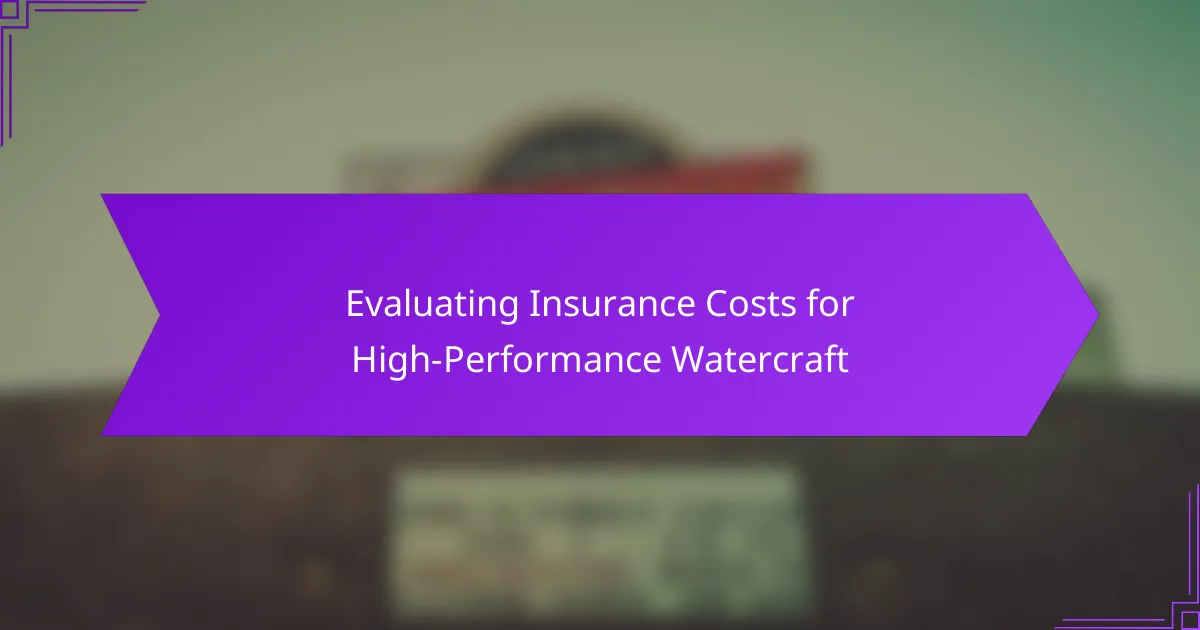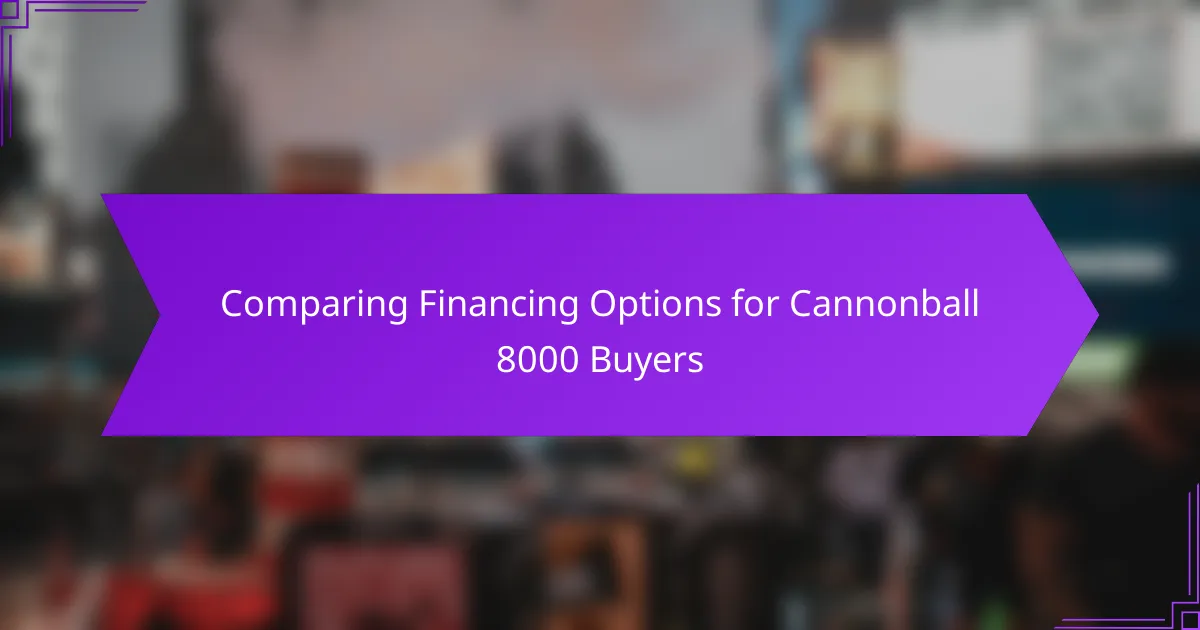Evaluating insurance costs for high-performance watercraft requires a thorough understanding of available coverage options and the specific risk factors associated with your vessel. By comparing quotes from various providers and considering elements such as engine power and usage frequency, boat owners can make informed decisions to secure the best policy while effectively managing costs.

How to Evaluate Insurance Costs for High-Performance Watercraft
Evaluating insurance costs for high-performance watercraft involves understanding the types of coverage available, comparing quotes from different providers, and assessing the specific risk factors associated with your vessel. This process helps ensure you find the best policy that meets your needs while managing costs effectively.
Understand coverage types
High-performance watercraft insurance typically includes several coverage types, such as liability, collision, comprehensive, and personal property coverage. Liability coverage protects you against claims for bodily injury or property damage to others, while collision coverage pays for damage to your own vessel in an accident.
Comprehensive coverage protects against non-collision incidents like theft, vandalism, or natural disasters. Personal property coverage can help replace items lost or damaged while on board. It’s crucial to assess which types of coverage are necessary based on how and where you use your watercraft.
Compare quotes from providers
Obtaining quotes from multiple insurance providers is essential for finding competitive rates. Start by gathering information about your watercraft, including its make, model, year, and any safety features or upgrades. This information will help insurers provide accurate quotes.
When comparing quotes, look beyond the price. Examine the coverage limits, deductibles, and any exclusions or additional benefits offered. Some insurers may provide discounts for safety courses or bundling policies, which can significantly affect your overall costs.
Assess risk factors
Risk factors play a significant role in determining insurance costs for high-performance watercraft. Factors such as the type of watercraft, its horsepower, your boating experience, and the areas where you operate can influence premiums. For instance, operating in high-traffic or hazardous waters may increase your risk profile.
Additionally, consider the frequency of use and your history of claims or accidents. Insurers often reward safe boating practices with lower premiums. Regularly reviewing and updating your insurance based on changes in these risk factors can help you maintain appropriate coverage at a reasonable cost.
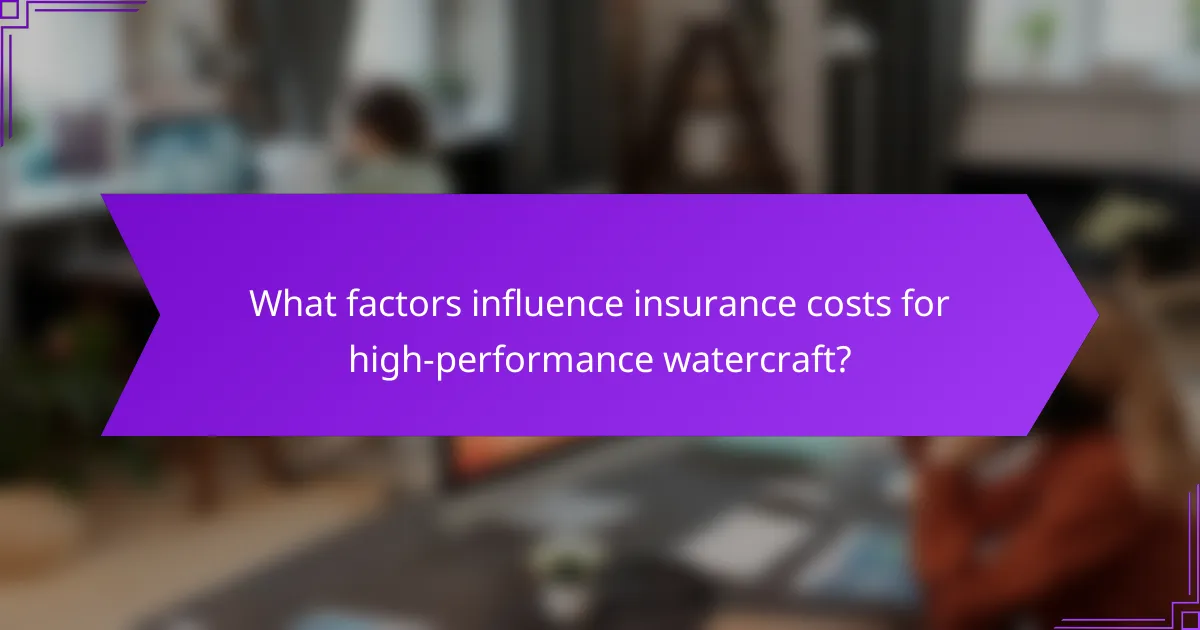
What factors influence insurance costs for high-performance watercraft?
Insurance costs for high-performance watercraft are influenced by several key factors, including the type of watercraft, its engine power and size, and how frequently it is used. Understanding these elements can help boat owners make informed decisions when selecting insurance coverage.
Type of watercraft
The type of watercraft significantly impacts insurance costs. High-performance models, such as speedboats and racing yachts, typically carry higher premiums due to their increased risk of accidents and damage. In contrast, more traditional vessels like fishing boats may have lower insurance rates.
When evaluating insurance, consider the specific category of your watercraft, as insurers often group them into classifications that reflect their risk profiles. For example, personal watercraft (PWCs) may have different rates compared to larger motorboats.
Engine power and size
Engine power and size are crucial factors in determining insurance premiums for high-performance watercraft. Boats with larger engines generally pose a greater risk, leading to higher insurance costs. Insurers assess the horsepower and size to gauge potential speed and handling capabilities.
As a rule of thumb, boats with engines exceeding a certain horsepower threshold may see a significant increase in premiums. It’s advisable to compare quotes from different insurers to find the best coverage that aligns with your boat’s specifications.
Usage frequency
How often you use your high-performance watercraft can also affect insurance costs. Frequent use typically results in higher premiums, as the likelihood of accidents increases with more time spent on the water. Insurers may ask for estimated usage to tailor your policy accordingly.
To potentially lower costs, consider limiting your coverage during off-seasons or when the boat is not in use. Some insurers offer discounts for seasonal policies, which can be beneficial for those who do not use their watercraft year-round.

Which insurance providers specialize in high-performance watercraft?
Several insurance providers focus on high-performance watercraft, offering tailored coverage options that cater to the unique needs of these vessels. Key players in this market include Progressive Insurance, Geico Marine Insurance, and State Farm Boat Insurance, each providing distinct features and benefits for boat owners.
Progressive Insurance
Progressive Insurance is well-known for its comprehensive coverage options for high-performance watercraft. They offer specialized policies that include coverage for physical damage, liability, and personal effects, ensuring that boat owners are protected in various scenarios.
One notable feature is their customizable coverage, allowing policyholders to add extras such as towing and roadside assistance. It’s advisable to compare their rates and coverage limits with other providers to find the best fit for your specific needs.
Geico Marine Insurance
Geico Marine Insurance provides competitive rates and extensive coverage for high-performance watercraft. Their policies typically include liability, collision, and comprehensive coverage, which can be tailored to the unique specifications of your vessel.
Geico also offers discounts for safety features and membership in boating organizations, which can significantly reduce premiums. It’s beneficial to gather quotes from Geico alongside other insurers to ensure you are getting the best value for your coverage.
State Farm Boat Insurance
State Farm Boat Insurance offers a range of policies specifically designed for high-performance watercraft. Their coverage options include liability, medical payments, and uninsured boater coverage, providing a solid safety net for boat owners.
State Farm is known for its personalized service, allowing customers to discuss their specific needs with an agent. When considering State Farm, be sure to ask about any available discounts and how they compare to other providers in terms of cost and coverage options.
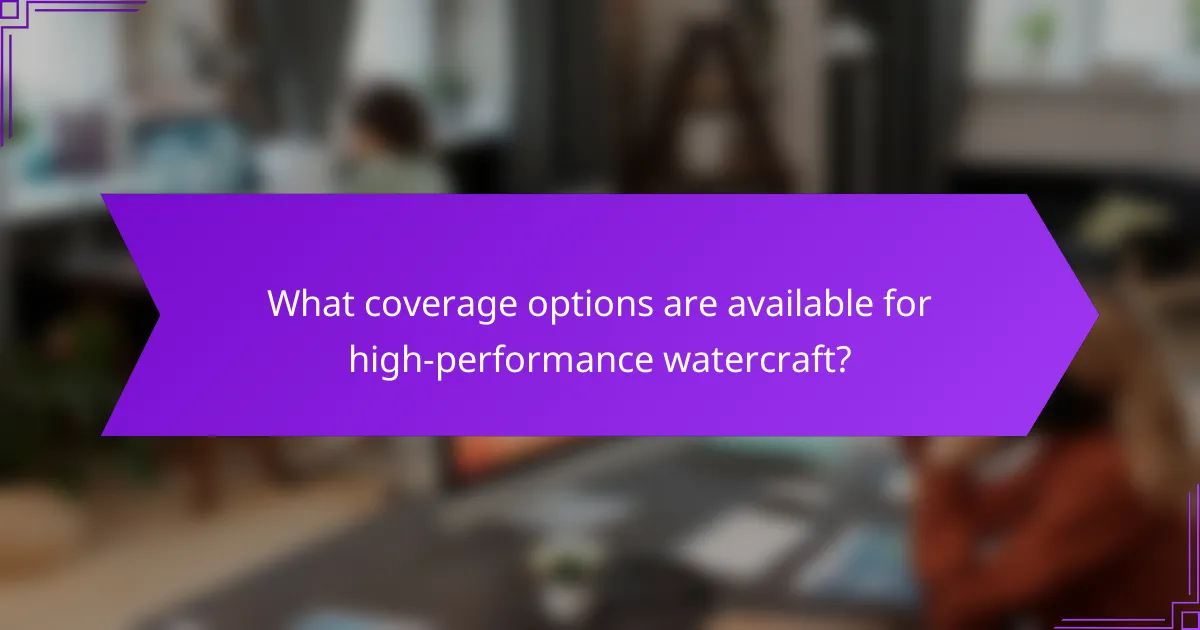
What coverage options are available for high-performance watercraft?
High-performance watercraft insurance typically includes several coverage options tailored to protect your investment and ensure safety on the water. The main types of coverage are liability, comprehensive, and collision, each serving distinct purposes and offering varying levels of protection.
Liability coverage
Liability coverage is essential for high-performance watercraft as it protects you against claims for bodily injury or property damage caused to others while operating your vessel. This type of coverage is often required by law and can help cover legal fees and settlements if you are found at fault in an accident.
When selecting liability coverage, consider the limits that will adequately protect your assets. Many experts recommend coverage limits in the range of $300,000 to $1 million, depending on your financial situation and the risks associated with your watercraft usage.
Comprehensive coverage
Comprehensive coverage protects your high-performance watercraft from non-collision-related incidents, such as theft, vandalism, or natural disasters. This type of insurance is crucial for safeguarding your investment against unforeseen events that could lead to significant financial loss.
When evaluating comprehensive coverage, check for exclusions and specific terms related to high-performance vessels. Premiums can vary widely based on factors like the value of the watercraft and the area where it is stored, so it’s wise to compare quotes from multiple insurers.
Collision coverage
Collision coverage pays for damages to your high-performance watercraft resulting from a collision with another vessel or object, regardless of fault. This coverage is particularly important for high-speed crafts, which may be more prone to accidents due to their performance capabilities.
When considering collision coverage, assess the deductible options available. A lower deductible may result in higher premiums, while a higher deductible can reduce costs but increase out-of-pocket expenses in the event of a claim. It’s advisable to choose a deductible that aligns with your financial comfort level and risk tolerance.

How to compare insurance quotes effectively?
To compare insurance quotes effectively, gather multiple quotes from different providers and analyze them based on coverage, premiums, and policy features. This process helps identify the best value for high-performance watercraft insurance tailored to your needs.
Use online comparison tools
Online comparison tools simplify the process of evaluating insurance quotes by allowing you to input your specific requirements and receive multiple quotes simultaneously. These platforms often filter options based on coverage types, deductibles, and premiums, making it easier to spot the best deals.
When using these tools, ensure you provide accurate information about your watercraft, including its make, model, and usage. This accuracy helps generate quotes that reflect your actual insurance needs.
Request personalized quotes
Requesting personalized quotes directly from insurers can yield more tailored options that online tools may not capture. Contacting agents allows you to discuss your unique situation, such as your watercraft’s performance capabilities and intended use, which can influence coverage needs and pricing.
Be prepared to provide detailed information and ask about discounts for safety features or membership in boating organizations. This direct interaction can lead to better rates and customized coverage options.
Evaluate customer reviews
Customer reviews provide valuable insights into the reliability and service quality of insurance providers. Look for feedback on claims processing, customer support, and overall satisfaction to gauge how well a company handles its policies.
Focus on reviews from other high-performance watercraft owners, as their experiences will be more relevant to your situation. Websites that aggregate reviews can help you compare multiple insurers quickly and effectively.
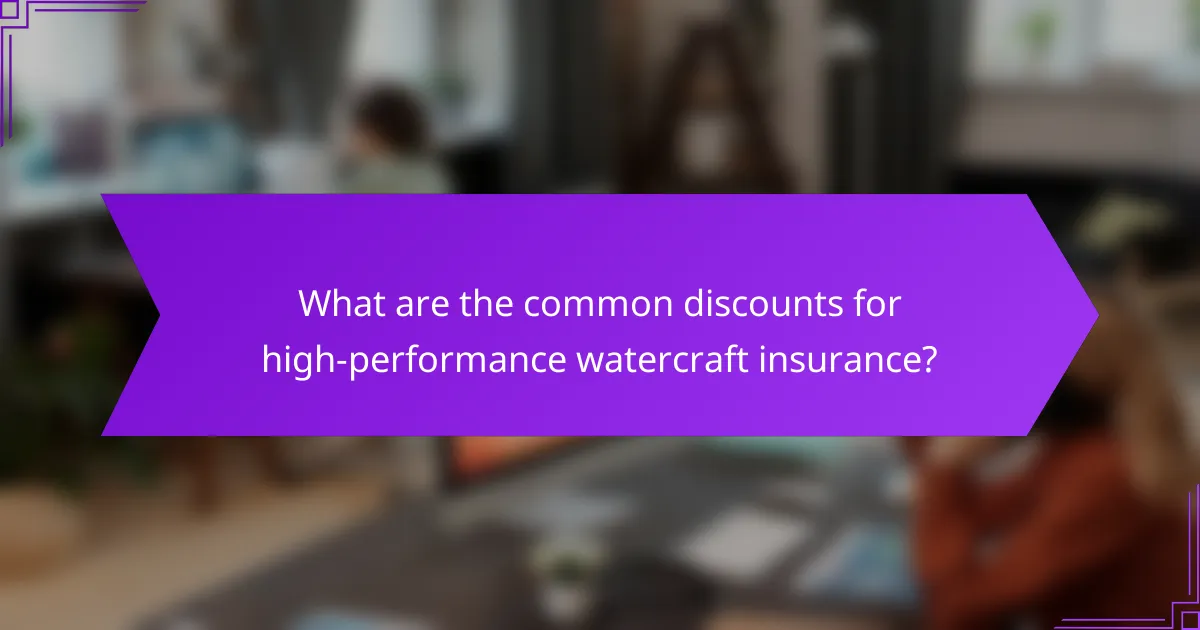
What are the common discounts for high-performance watercraft insurance?
High-performance watercraft insurance often comes with various discounts that can significantly reduce premiums. These discounts typically reward responsible behavior, bundling policies, and safety measures.
Multi-policy discounts
Multi-policy discounts are available when you insure multiple types of property with the same insurance provider, such as combining your high-performance watercraft insurance with auto or home insurance. This can lead to savings of around 10% to 25% on your total premiums.
To take advantage of this discount, contact your insurance provider to inquire about bundling options. Ensure that you compare the total costs of bundled policies against individual policies to confirm you are getting the best deal.
